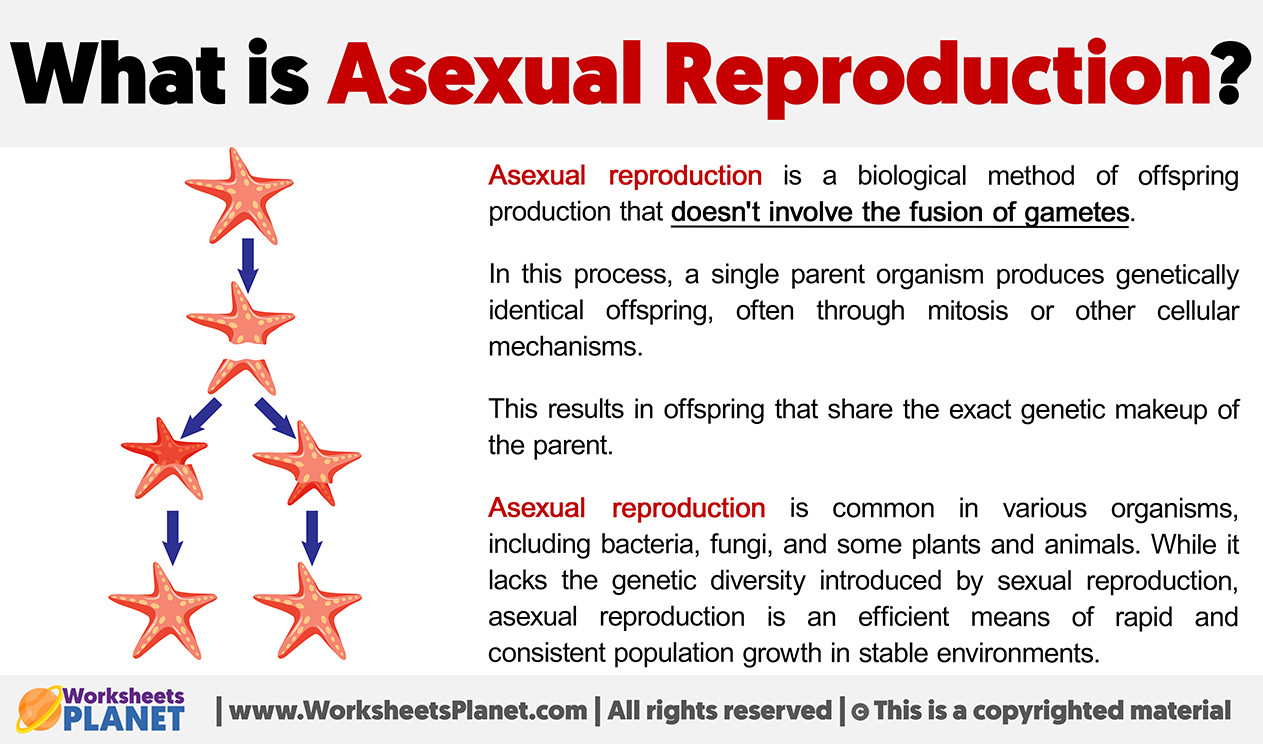Asexual reproduction is a biological method of offspring production that doesn’t involve the fusion of gametes.
In this process, a single parent organism produces genetically identical offspring, often through mitosis or other cellular mechanisms. This results in offspring that share the exact genetic makeup of the parent.
Asexual reproduction is common in various organisms, including bacteria, fungi, and some plants and animals. While it lacks the genetic diversity introduced by sexual reproduction, asexual reproduction is an efficient means of rapid and consistent population growth in stable environments.


